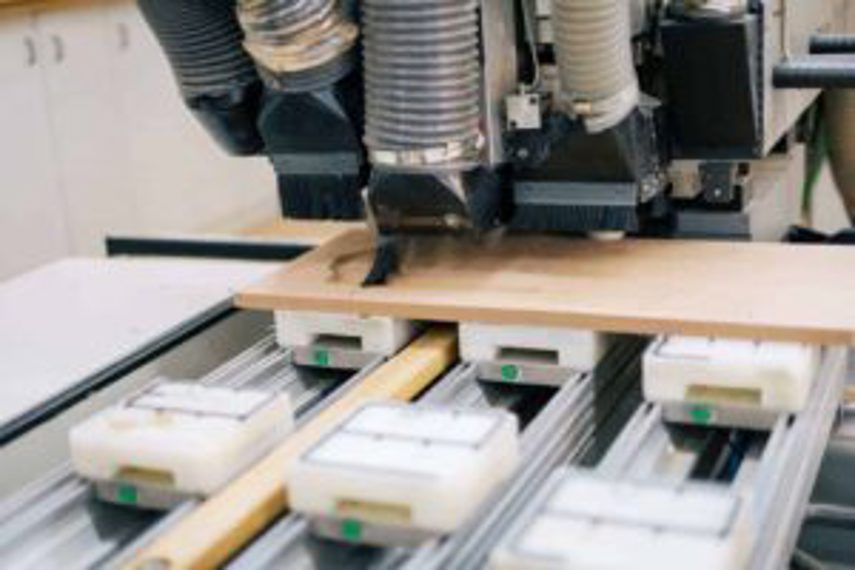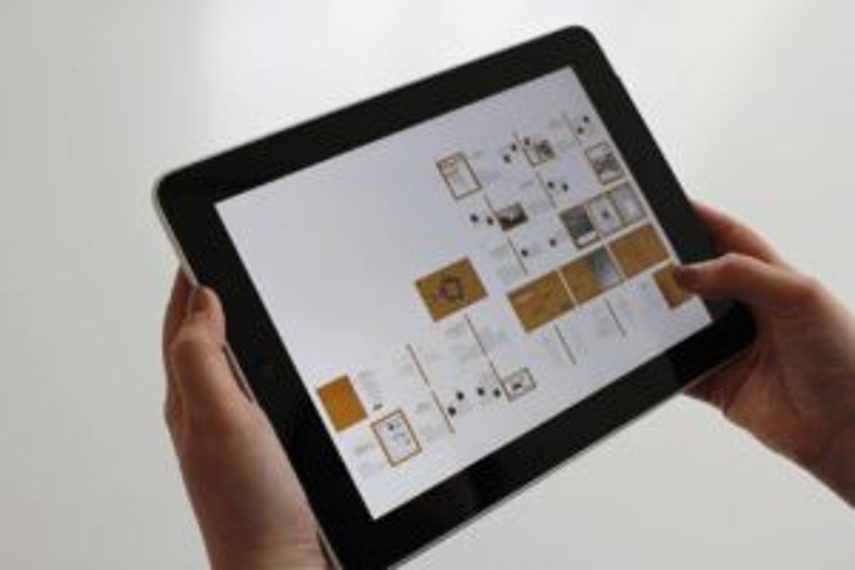
Today's manufacturing sector is being shaped by large scale economic forces, technological change, rising costs, and supply chain disruptions.
Digital, connected and smart systems are on the rise, while at the same time manufacturers face challenges such as the ‘Great Resignation’ and clogged-up supply chains – as well as increasing demand for sustainable products.
So what are the main trends in manufacturing you need to know for 2024? We shed some light on current trends – and what’s around the corner.
Global manufacturing trends
Inflation succeeded the Covid-19 pandemic, bringing a new wave of challenges for manufacturers in 2024.
But amid crises come opportunities, and the industry has adapted faster to technologies and new ways of working as it reshapes itself for the new world.
Consumer-led demand: personalisation and sustainability
Globally, the industry is shifting to meet consumer-led demand, with production processes designed to meet the changing requirements of customers.
Consumers are increasingly expecting personalised products, faster delivery systems, and sustainable and transparent practices.
There's also an increased expectation that demand can be anticipated by the use of data analytics, artificial intelligence, and tracking of customer trends.
Smart technology
Factories that utilise ‘smart’ technologies are regarded as key to manufacturing competitiveness. Investing in cloud computing, 5G capability, AI and advanced data analysis will enable manufacturers to set themselves up for the future.
Supply chain and logistics challenges
This year the industry will also likely face more supply chain disruptions and transportation challenges. New strategies will need to be adopted to lessen the impact. Digital supply networks and data analytics will also be utilised to allow for more agile responses to disruptions.
Higher prices on raw materials and energy from the ongoing war in Ukraine, plus sanctions all contributing to further disruption for many industries.
Labour shortages
An incredibly tight labour market has also proved challenging through the pandemic, and the industry will be looking to adopt more technology-driven production to overcome the lack of skilled workers. Part of this will be considering better use of flexible work structures, more attractive remuneration packages, and more innovative processes and systems.
 Recent supply chain logjams and labour shortages have demonstrated how agility and adoption of new technology can be beneficial for manufacturers
Recent supply chain logjams and labour shortages have demonstrated how agility and adoption of new technology can be beneficial for manufacturers
Recent trends in manufacturing processes
The manufacturing industry was being transformed by Industry 4.0 even before the pandemic, with features such as the use of big data and automation creating more efficient systems and processes.
Industry 4.0 is shorthand for the idea we are in the fourth industrial revolution, with advancement of technologies blurring the difference between physical and digital products.
The adoption of Industry 4.0 technologies can be difficult and expensive, but in a world which is increasingly digital, it is imperative for manufacturers to adapt if they are to survive.
Here we give you examples of the technologies being adopted in Industry 4.0.
Trends in additive manufacturing (aka 3D printing)
3D printing is an area of manufacturing which has seen rapid uptake across a range of products. It’s used for a huge range of goods, including rocket parts, food, rubbish bins and buildings.
The technology is becoming popular for a multitude of reasons, including its minimal reliance on a supply chain. For small items such as cutlery, for example, a 3D printer can simply print the quantity required at any given time.
The technology is also being used in far more complex areas such as healthcare. For example, the technology is being explored to see if it can support organ transplants through creating 3D printed replica body parts using living cells.
The Ultimate Manufacturing Guide
The trends, terminology & developments successful manufacturers need to understand Read moreInternet of Things (IoT) trends in manufacturing
The Internet of Things (IoT) has long been touted as a technology which will upend the way we live, work and play. The recent acceleration in our shift to digital systems has again put it in the spotlight.
Broadly speaking, IoT is a system in which systems ‘talk’ to each other, using the likes of sensors and cloud systems to gather and analyse data in order to deliver connected outcomes to the user.
In manufacturing, the technology can be used to create networked devices and machines, enabling them to collect manufacturing data which can then be used to refine and improve systems. It also allows for the manufacturing of products without staff necessarily needing to be present, which saves on labour costs and minimises the risk of human error.
According to this PwC report, a recent survey of industrial manufacturers showed more than 70% are testing or building IoT solutions in their projects.
 Automation and robotics are increasingly common in manufacturing – and utilising the Internet of Things enables manufacturers to create a network of interconnected devices
Automation and robotics are increasingly common in manufacturing – and utilising the Internet of Things enables manufacturers to create a network of interconnected devices
The rise of automation and robotics in manufacturing
The manufacturing industry relies on production lines involving repetitive tasks, which makes it a natural fit for the adoption of automation and robotics.
And indeed, there has been an acceleration in the use of these tools in recent years as manufacturers seek to streamline operations, create consistency of output, and lessen the cost of and reliance on human labour.
The rise of robotics has been outlined in a report from the International Federation of Robotics, which says that Covid-related supply chain issues have shifted the focus to onshore, automated solutions to fulfil production line needs.
The Federation of Robotics notes that figures from the Association for Advancing Automation showed robot orders in the third quarter of 2021 were up more than a third from the same period a year prior.
Alongside the rise in robotics is the rise in ‘cobots’ – the robots designed to work alongside humans for better efficiency, partnered with human intelligence. According to New Zealand’s Callaghan Innovation, the robots are being used for repetitive jobs, which allows staff to be shifted to higher-value tasks. The article also notes that a return is being achieved in 12 months on the popular Universal Robotics Cobot.
IT trends in the manufacturing industry
The Internet of Things is destined to be a major factor in the future of manufacturing, as increasingly sophisticated technology allows machines to connect, share data and improve outputs.
But other trends in this space are also becoming clear. The rise of blockchain and Non-Fungible Tokens is creating opportunities for those in manufacturing to streamline their operations, better track performance, and automate transactions.
More broadly, the rise of Web3 – the shift toward a blurring of lines between digital and physical – is set to have a significant impact on manufacturing. Those in the industry will need to consider, for example, having a digital twin to a physical production line in order to set themselves up for future success.
Experts in the field note that many business leaders think that this evolution of manufacturing practices is too far off for them to be concerned with now – but say it’s important for businesses to prepare for what’s to come in order to benefit from it.
 Many innovations in manufacturing tech may look like the stuff of sci-fi – but experts suggest that businesses should start preparing now for what’s ahead
Many innovations in manufacturing tech may look like the stuff of sci-fi – but experts suggest that businesses should start preparing now for what’s ahead
The top three quality trends in manufacturing
Alongside the rapid shift toward more automated models is an advancement in safety and quality within the industry. There are several broad trends to note, and we’ve pulled out three here.
Higher safety standards
The Covid pandemic has focused attention on the safety of staff, sanitisation of products and general cleanliness of workplaces. The importance of safety has taken on a new meaning in the light of a global pandemic, when illness can spread so rapidly and be so deadly.
This has had a flow-on effect into the quality of workplaces generally, with health and safety practices coming under more scrutiny and ultimately creating safer workplaces.
Cultural shifts
Again, the Covid pandemic has in many ways ‘decentralised’ workplaces, which in turn has created an inevitable shift in working culture.
The move to more flexible working environments has forced a change in thinking, with greater responsibility on each individual to ‘own’ the idea of quality. This shift has seen the rise in individual responsibility to consider the product, end-to-end, and identify where improvements can and should be made.
Increased sophistication of quality assurance software
The importance of QA software became apparent through the pandemic, as businesses moved online and physical checks became, in many cases, less practical or possible.
Manufacturers who were more digitally advanced were able to adjust to this new world rapidly, while those who had not yet moved elements of their production online were left further behind.
Moreover, the role of QA overall has evolved to be a more integrated part of the manufacturing system, rather than a ‘tick’ at the end of the production line. As businesses move to more agile systems, the concept of QA has become embedded in the production process, through software and improved workflows.
 The electronics subsector – which has experienced many of the same challenges as others in recent times – is a natural fit for increased automation
The electronics subsector – which has experienced many of the same challenges as others in recent times – is a natural fit for increased automation
Food manufacturing industry trends 2024
Like so many other industries, food manufacturing has been upended by the onset of Covid. Consumer behaviour has changed – possibly permanently – by the impact of lockdowns and the rise in home cooking and baking.
Nervousness around crowds and in social situations means hospitality outlets are likely to continue to suffer, even as the pandemic fades and Covid becomes endemic.
According to a Deloitte report, 64% of consumers do not plan to return to their pre-pandemic restaurant dining habits in the near future.
The shift toward takeout and online ordering has forced businesses to pivot to different systems and invest in digital operations above physical spaces. The demand for paywave or other touch-free payment systems has also increased exponentially, forcing those who hadn’t yet invested in the technology to do so.
Furthermore, the pandemic has focused the food industry and consumers on the need for sustainability, and an understanding of the connectivity of humans, animals and the environment.
While sustainability has been a trend for some years, the pandemic and an increasing number of extreme weather events have meant the issues at play have felt more urgent than ever before. Manufacturers are responding with increasing transparency over supply chains, ensuring the sustainability of products, and offering more packaging products that are recycled or biodegradable.
Electronics manufacturing industry trends
The electronics manufacturing industry has faced the same supply chain disruptions, talent shortage, and sustainability challenges as other subsectors.
In 2024, the challenges are expected to be met in part by an intense focus on automation, which is a natural fit for the making of multiple small parts for electronic products.
Global supply chain issues are expected to continue, and as such there is likely to be a rise in the localisation of suppliers and an associated increase in 3D printing.
Sustainability is also a key focus for the industry. The shift away from global supply chains and towards local supply dovetails into the sustainability trend, as it minimises the industry’s carbon footprint and increases the reliance on more sophisticated technology.
Finally, the talent shortage is likely to remain a concern for the industry well into 2024. With many border restrictions still in place, labour market movement is limited. That’s likely to lead to the need for even greater flexibility, and a focus on greater automation within factories.
 The sustainability drive – which is fuelled by consumer expectations – is a key consideration for manufacturers in 2022 and beyond
The sustainability drive – which is fuelled by consumer expectations – is a key consideration for manufacturers in 2022 and beyond
Chemical manufacturing industry trends
The chemical manufacturing industry is often slow to evolve compared to others, but it has been forced by the pandemic to move far more rapidly into the digitisation and connectivity that marks the onset of Industry 4.0.
The rise in focus on sustainability and environmentally friendly products is a major focus for the sector, with pressure from Government, investors and other parties to create a cleaner industry.
That pressure will likely intensify in 2024, with the fears over the pandemic set to ease and concerns such as climate change again dominating global agendas.
Automotive manufacturing trends
In automotive manufacturing, trends which have been on the rise for some time are set to accelerate, often due to legislative changes or private sector support.
Electric or hybrid car purchases are being encouraged by Governments. In New Zealand, for instance, there is a ‘Clean Car Discount’, which provides rebates of several thousand dollars to consumers.
Beyond the rise of electric cars, however, is the movement toward other more environmentally friendly transportation such as public transport, carpooling or electric bikes.
According to this McKinsey report, vehicle sales are expected to grow, but at a slower pace. The report notes that up to one out of ten cars sold in 2030 could be a shared vehicle, and up to 15% of new cars sold in the same timeframe could be fully autonomous.
Contract manufacturing industry trends
Contract manufacturing is when a business outsources some of its manufacturing requirements to another. It’s a sector that has seen some benefits from the pandemic, given the restriction on global movement and labour forces, and the need to look locally for business support.
In particular, the sector has benefitted hugely from the uptick in healthcare, with investments into new drugs and therapeutic procedures supporting its growth.
Global contract manufacturing is forecast to grow at a CAGR of over 9% until 2026. The sector is likely to continue benefiting from the breakdown in global labour flow and a talent shortage across numerous aspects of manufacturing.
 There's a wide range of options for adding to or boosting automated elements in your manufacturing business – from using cloud software to AI and robotic elements
There's a wide range of options for adding to or boosting automated elements in your manufacturing business – from using cloud software to AI and robotic elements
Future trends in manufacturing
If the last two years have shown us anything, it’s how unpredictable the world can be. The trajectory of the pandemic is far from clear, and the manufacturing industry is being forced to adapt to a global situation that remains fluid.
However, some trends will clearly be adopted, albeit at differing speeds. They include:
- Industry 4.0: automation and robotics
The Internet of Things will continue to evolve in Industry 4.0, and smart factories will continue to develop that rely on networks of linked devices.
At the same time, existing technology will be refined, and also become more accessible and widely used – whether it’s cloud software to manage inventory and other data, or robotics on your factory floor
- Focus on sustainability
A focus on sustainability will continue in manufacturing, and consumers will expect evidence of supply chains and/or processes that are environmentally sound and minimise harm.
- Web3: Decentralised digital structure
Web3 is the concept of a World Wide Web which has a decentralised digital structure, utilising tools such as blockchain and NFTs. While not in wide use now, watch this space in future.
Read more: 5 Manufacturing Software Trends for 2024
